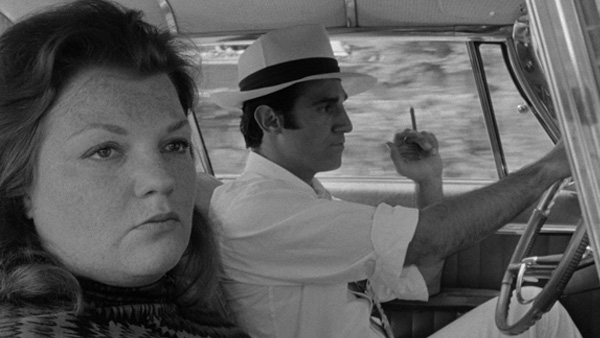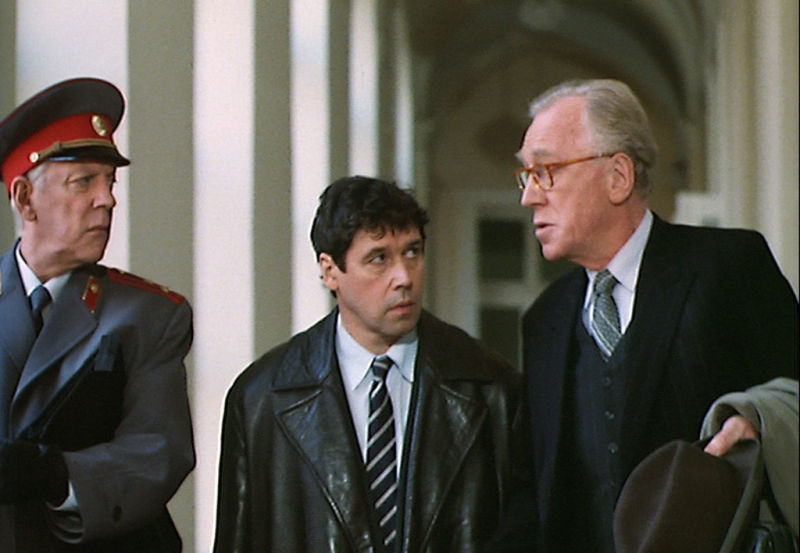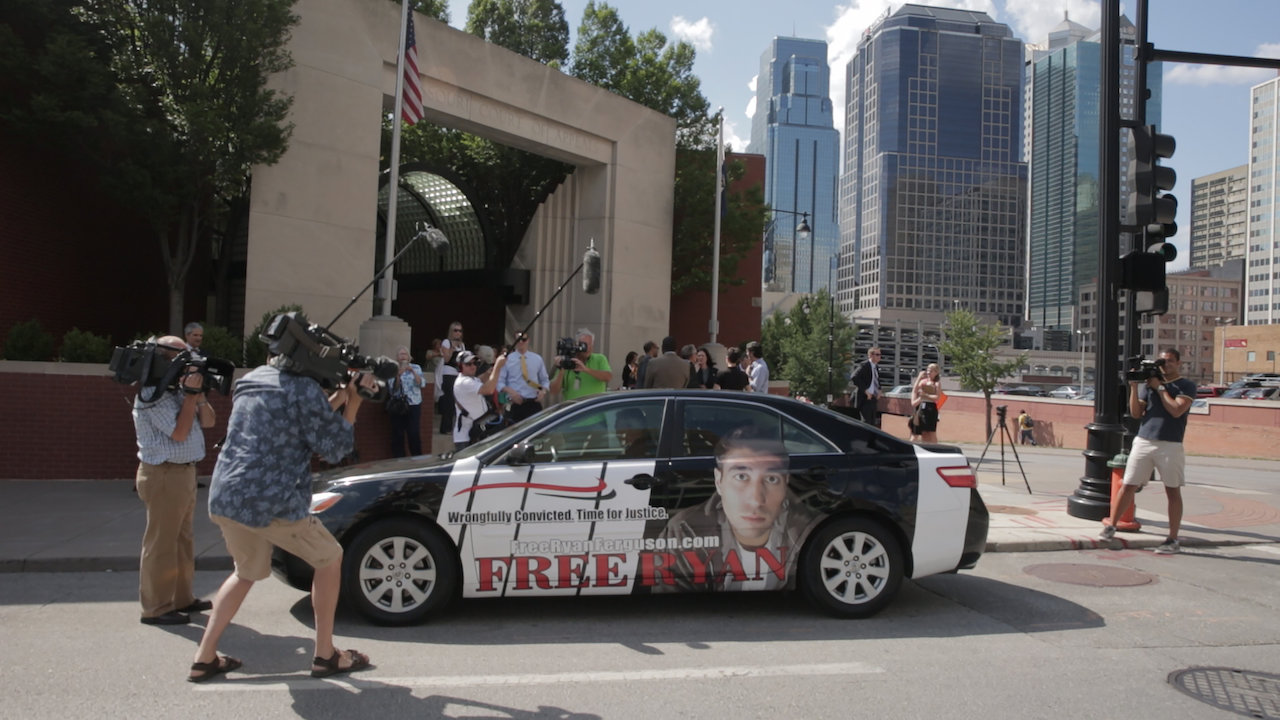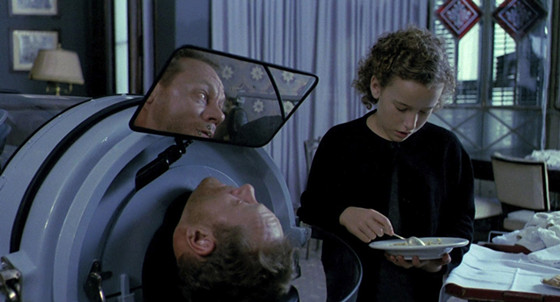6. The Honeymoon Killers (1970)

The Honeymoon Killers is a staple of the true crime genre and a profoundly raw portrayal of tragedy. The plot centers around Martha Beck (Shirley Stoler). She is a lonely nurse who joins a “correspondence club” and finds a romantic pen pal in Raymond Fernandez (Tony Lo Bianco). Martha falls deeply in love with Raymond and is intent on sticking by his side even when she discovers his dirty secret. Raymond is a con man and a killer. Unfortunately, Martha is not scared away by this and instead joins Raymond on a crazed killing spree.
The examination of Raymond and Martha’s emotional and behavioral escalation as a couple is staged amazingly and enthralls audiences wholeheartedly. Leonard Kastle artistically steers the narrative meticulously and unavoidably into a dark abyss in which Martha’s jealousy, resentment, and scheming transform her and the already corrupt Raymond into complete merciless killers.
Kastle also uses the low budget and improvisational cinematography to his advantage. The grit and grime of the film’s aesthetic suggests to spectators that they are watching more than just an elaborated cinematic retelling of events. Viewers feel like they are watching a documentary plucked right out of an old newsreel. Even after the credits end, a loop of true-crime-fueled nightmares are forever imprinted in movie-goers’ minds.
7. Citizen X (1995)

Set in the 1980s, Citizen X is based off the real-life serial killer Andrei Chikatilo (Jeffrey DeMunn) and his eight-year killing spree consisting of 52 victims. In the film, Lt. Viktor Burakov (Stephen Rea) desperately tries to stop Chikatilo as his kill count rises, but the Soviet bureaucracy regularly obstructs his efforts by stating a Communist Party member could never be a serial killer. With help from only his cynical superior (Donald Sutherland) and a scared but determined psychiatrist (Max von Sydow), Burakov remains set on catching Chikatilo and putting an end to his murders.
Citizen X is a movie that excels thanks to its stunning performances. Jeffrey DeMunn portrays an insanely creepy killer due to his ability to make the character so ordinary. Viewers become more and more frightened as his averageness allows him to perform his terrible actions. Also incredible are Donald Sutherland as Burakov’s frustrated ally on the investigatory committee and Max von Sydow who creates for Burakov a “Citizen X” profile of the possible killer.
Citizen X is a must-watch TV movie of the true crime genre.
8. Dream/Killer (2015)

In 2005, a man named Ryan Ferguson was found guilty and sentenced to 40 years in prison for a crime he did not commit. The story of Dream/Killer follows Ryan’s father, Bill, and his 10-year campaign to prove his son’s innocence.
From the beginning of the film, the justness of Bill’s cause, along with his sympathetic nature, is so clear and obvious that viewers immediately connect with him. Bill’s paternal devotion and his unwavering mission to see his son out of prison stirs an array of emotions from anger at the so-called “justice system” to heartache over Ryan’s struggles. With so many feelings arising, spectators not only bond with the people seeking justice for Ryan but they strongly bond with what the film aims to say and achieve on a grander scale.
Commenting more on Dream/Killer’s overall message, it must be mentioned that the film challenges audiences in the best way. It makes viewers ask themselves important questions that are not easily brushed off or adequately answered. Simply stated: If justice is managed by humans, is it not fair to say mistakes can be made? If innocent but life-shattering errors are made, why must the systems that society puts in place in order to protect and serve citizens be so averse to fixing these errors.
Dream/Killer is more than just a watchable documentary. For viewers, it becomes a thought-provoking discussion of ethics.
9. In a Glass Cage (1986)

In a Glass Cage may appear as an unforgivably gruesome or controversial movie on the surface, but there is more to the movie than audiences may suspect. The film centers around an ex-Nazi child molester and killer, Klaus (Günter Meisner), who due to a botched suicide attempt depends on an iron lung to live. After a young man named Angelo (David Sust) is hired by Klaus to be his caretaker, Klaus soon realizes hiring Angelo was the wrong decision.
While disturbing and hard to watch, In a Glass Cage does work on multiple levels. The film is a part of the true crime genre as it takes inspiration from the real-life crimes of Gilles de Rais. There are also clear parallels to the genocide and mutilation of children in WWII. The film can even work as a stand-alone piece. Whatever the case may be, the film can be commended for desiring to have a voice on heavy themes such as trauma, vengeance, and madness.
The direction and writing by Agustí Villaronga also elevates the film in several ways. Villaronga’s use of cool blues and blacks with intermittent pops of red are purposeful and artistically visualize his message of pain and lunacy. Villaronga is also not opposed to the art of symbolism. The various cages of course keep characters imprisoned within rooms and machines, but the cages also represent imprisonment by their own horrendous trauma.
In a Glass Cage is an uncomfortable, gruesome, nasty, polarizing, but fascinating film to watch.
10. The Snowtown Murders (2011)

Based on the series of murders committed by John Bunting, Robert Wagner and James Vlassakis in Australia, The Snowtown Murders is an extremely effective film that leaves viewers horrified and stunned. In the movie, a seemingly charming but sadistic predator (Daniel Henshall) mentors his girlfriend’s son (Lucas Pittaway) in order to make him an accomplice in a murder spree.
This directorial debut by Justin Kurzel is the cinematic embodiment of the word bleak. Visually, Kurzel commands mood with the use of intentional yet lifeless colors. As a result of Kurzel’s skill level and obvious filmmaking craftmanship, the aesthetic of movie genuinely transports viewers to a dismal and defeated Australian suburb where audiences meet the main characters of the film.
The well-established environment also compliments an amazing performance by Daniel Henshall as Bunting. Henshall fearlessly and unsettlingly shows off Bunting’s habits, tight grip over his family, manipulation of others, and the chilling social intimacy he has with his victims. From start to finish, there is always an impressive sense of evil that is maintained even when Henshall as Bunting displays a smile or says an encouraging expression.
The Snowtown Murders is a study of pure wickedness and crushing dominance that becomes a test of endurance for movie-goers.